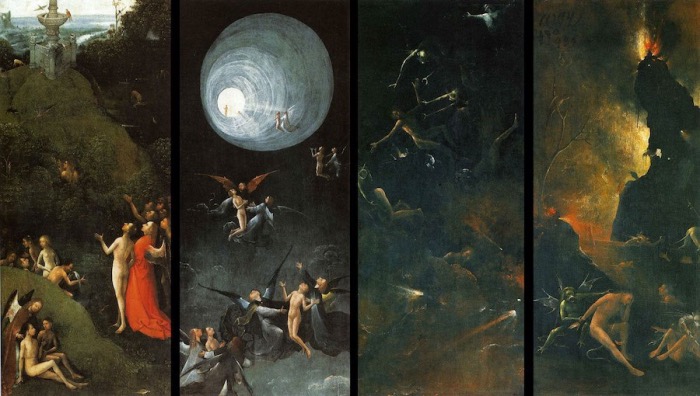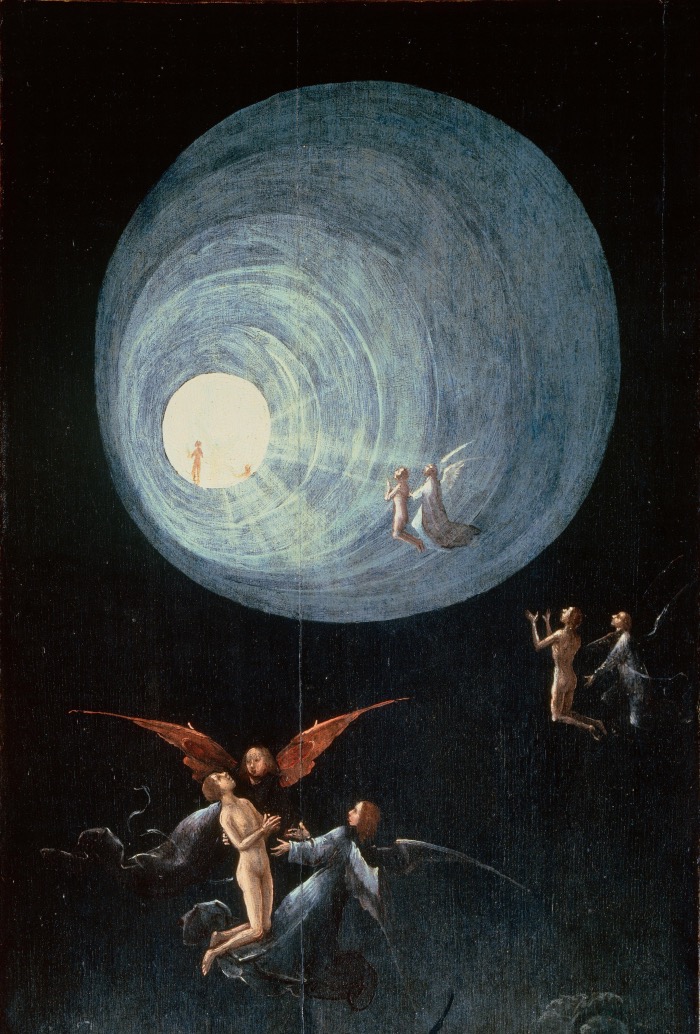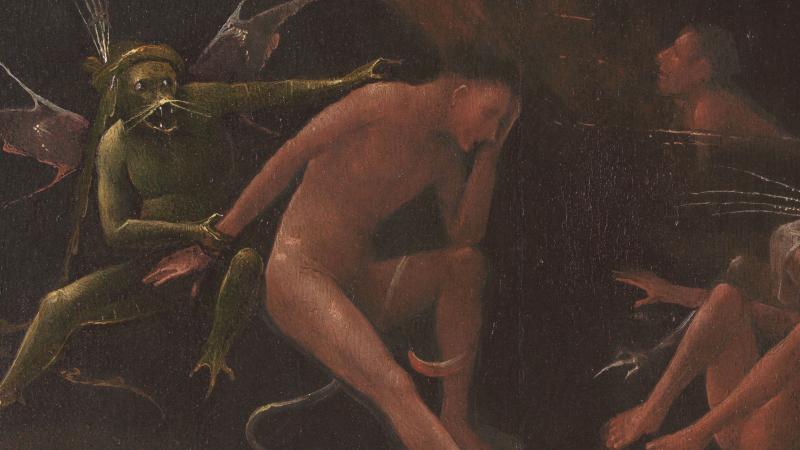
Bosch’s fascinating and mysterious Quattro Sportelli with a Vision of the Afterlife is surprisingly kept in the heart of Venice, at the Doge’s Palace. But why is a masterpiece by the famous Dutch painter Hieronymus Bosch located in Venice, in a city known mainly for the works of Titian, for contemporary art museums such as the Peggy Guggenheim Collection and for the magic and history of the lagoon?
To understand the reason for this unusual location, it is necessary to go back in time and consider the historical context of the time. n this post I will try to answer all these questions and explain the importance of this work to be seen in Venice.
Bosch’s Mysterious Four Doors with a Vision of the Afterlife in Venice

During the Renaissance, Venice was one of the most influential cities in Europe and an important economic and cultural centre. The Most Serene Republic of Venice maintained trade relations with various regions, including the Netherlands, the home of Hieronymus Bosch. Through these connections, Bosch’s work reached Venice, becoming an integral part of the city’s artistic collection.
However, there are also other reasons that explain the presence of Bosch’s Quattro Sportelli con Visione dell’Aldavà in Venice. Firstly, Venice was known for its artistic and religious tolerance. This made the city a perfect place to host works like Bosch’s, which had symbolic, allegorical and often enigmatic content. The Venetians’ open-mindedness towards experimental and provocative art allowed works like Bosch’s to find an audience and passionate collectors.
Moreover, Venice was a centre of cultural exchange and knowledge. Venetian merchants and diplomats were in contact with artists, scholars and collectors from all over Europe, ensuring a wide variety of artworks from different artistic traditions. The arrival of Bosch’s Quattro Sportelli with a Vision of the Afterlife in Venice may have been influenced by this network of cultural exchange, which facilitated the flow of works of art between European cities.
ANALYSIS OF THE FOUR DOORS WITH BOSCH’S VISION OF THE BEYOND
The first panel depicts the Earthly Paradise in which men and women move through a hilly landscape and are accompanied by angels. These figures look towards a fountain of life that is located high up on the top of a hill. In the background one can see a lion devouring another and anticipating the corruption of human beings that will result in their expulsion from Paradise.
The second panel describes the Ascent to the Empyrean in which souls seem to be attracted and almost sucked into the light coming from a cylinder. It actually appears that the souls become lighter and ascend until they reach the light.
The third panel depicts the Fall of the Damned and in this case we are faced with an extraordinary composition in which souls do not descend but sink into darkness, pursued by demons. This is the panel of the darkest tones and in which the darkness is lit only by a few glimmers that allow a glimpse of the outlines of the few figures depicted.
The fourth and final panel depicts Hell where a figure almost appears in the foreground in despair over her fate as a devil torments her. There are few other figures in this panel, but what catches the viewer’s eye is a cliff shrouded in flames at the top.
Each door reveals a different aspect of the vision of the Afterlife, inviting the viewer to immerse themselves in a symbolic journey through hell, purgatory and paradise. Its presence at the Doge’s Palace in Venice is a reminder of artistic diversity and the ability to open the doors of the imagination.
SOME CURIOSITIES ABOUT THE FOUR DOORS WITH BOSCH’S VISION OF THE BEYOND
The four doors with Bosh’s Vision of the Afterlife were probably part of Cardinal Grimani’s Venetian collection. We know of the presence of this work in Venice as early as the end of the 16th century because Marcantonio Michiel describes the paintings in ‘Notizia d’opera del disegno (1521).
The role of the Venetian nobility in collecting and commissioning works of art such as this was crucial. Noble Venetian families often engaged in the financing of important works of art and it is possible that Cardinal Grimani acquired Bosch’s Quattro Sportelli con Visione to enrich his private collection and to entertain his guests with complex discussions on the Afterlife and the meaning of life.
Bosch’s Four Doors with a Vision of the Afterlife is an unprecedented work of Renaissance art. The enigmatic images populated by bizarre creatures, mysterious symbolism and allegorical scenes reflect the complexity and depth of Bosch’s thinking. One example is the other great masterpiece, Bosch’s Triptych of the Garden of Earthly Delights, to be seen in the Prado Museum.
The location of Bosch’s Quattro Sportelli with a Vision of the Afterlife in Venice represents the perfect combination of a city open to art and innovation and an extraordinary work that challenges the artistic conventions of its time. Thanks to this unique combination of factors, we are now able to admire and study the work of one of the greatest masters of the Renaissance at close quarters, letting ourselves be captivated by its brilliance and enigmatic message.


